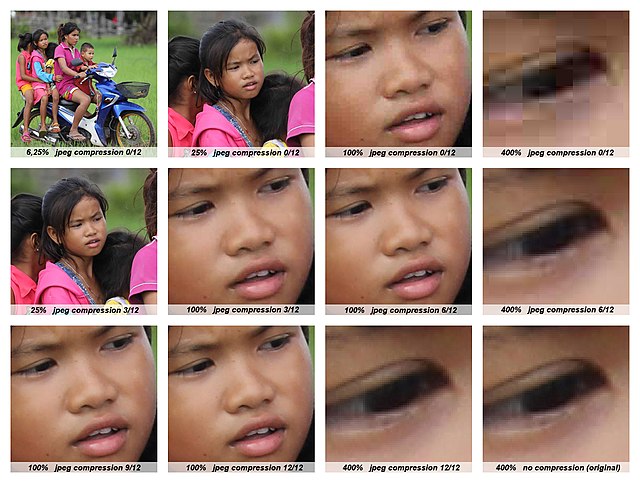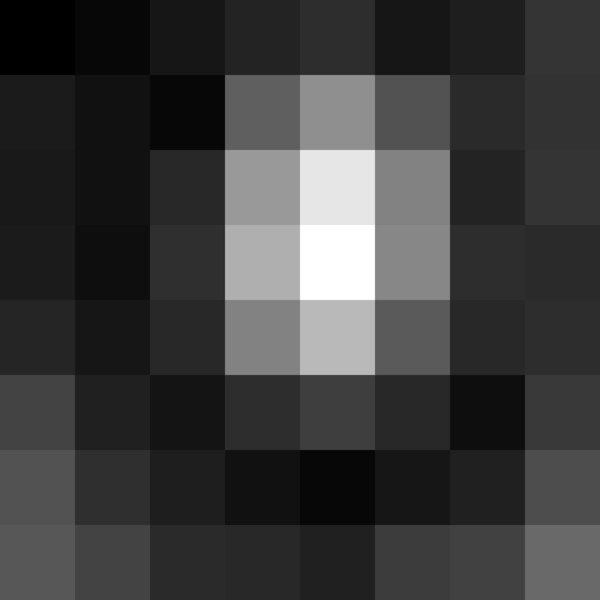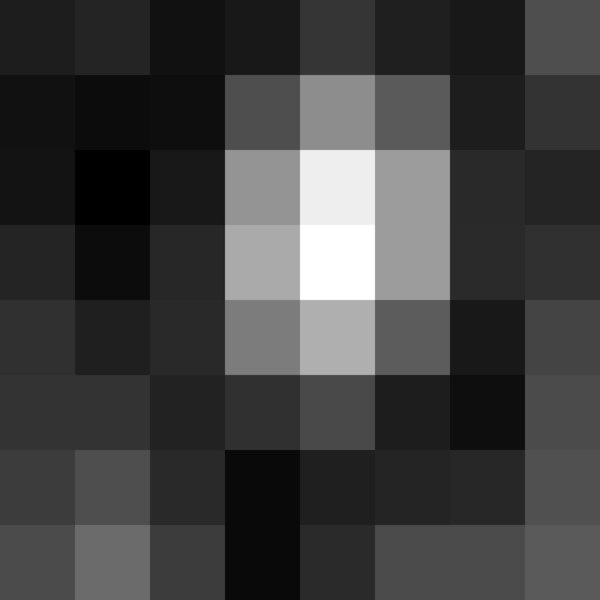Image quality can refer to the level of accuracy with which different imaging systems capture, process, store, compress, transmit and display the signals that form an image. Another definition refers to image quality as "the weighted combination of all of the visually significant attributes of an image". The difference between the two definitions is that one focuses on the characteristics of signal processing in different imaging systems and the latter on the perceptual assessments that make an image pleasant for human viewers.
Blown highlights are detrimental to image quality. Top: Original image. Bottom: Blown areas highlighted in red.
At full resolution, this image has clearly visible compression artifacts, for example along the edges of the rightmost trusses.
JPEG is a commonly used method of lossy compression for digital images, particularly for those images produced by digital photography. The degree of compression can be adjusted, allowing a selectable tradeoff between storage size and image quality. JPEG typically achieves 10:1 compression with little perceptible loss in image quality. Since its introduction in 1992, JPEG has been the most widely used image compression standard in the world, and the most widely used digital image format, with several billion JPEG images produced every day as of 2015.
The compressed 8×8 squares are visible in the scaled-up picture, together with other visual artifacts of the lossy compression.
Visual impact of a jpeg compression on Photoshop on a picture of 4480x4480 pixels
Image: JPEG example image
Image: JPEG example image decompressed






